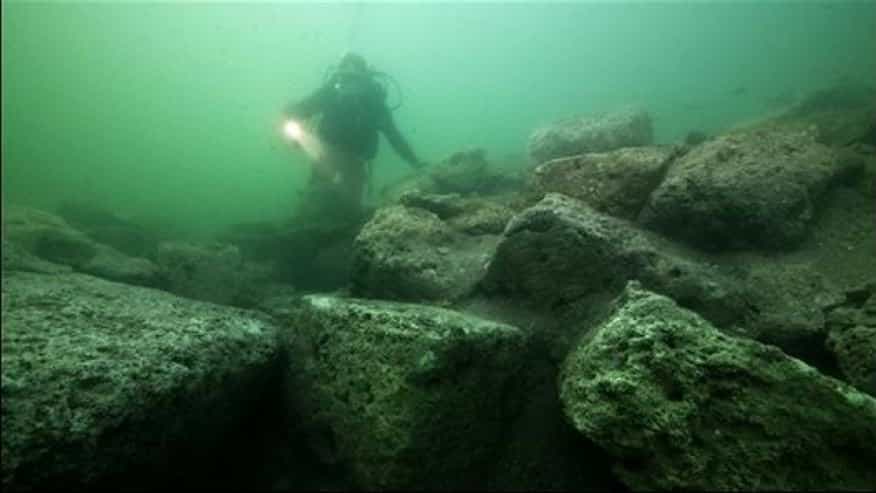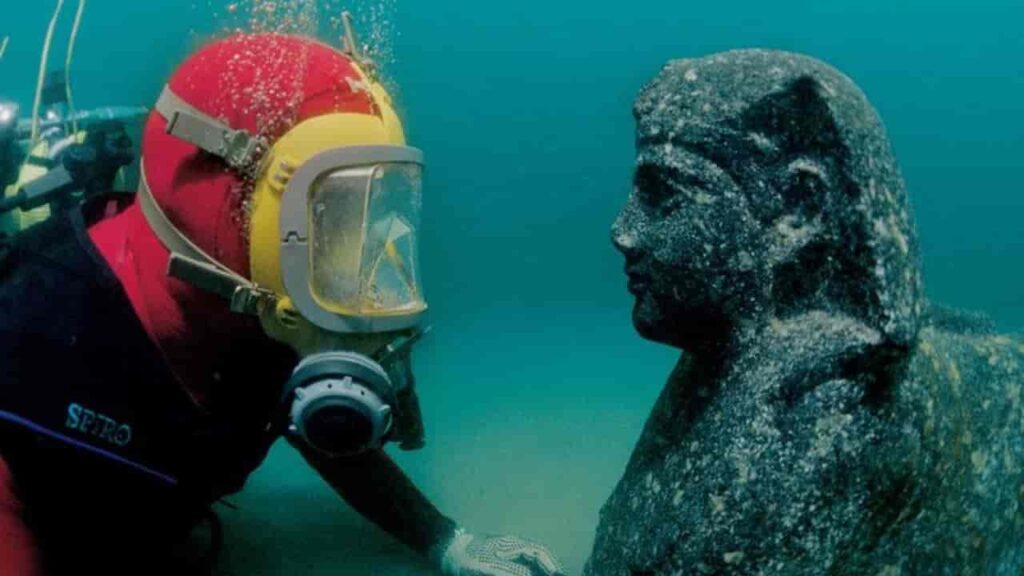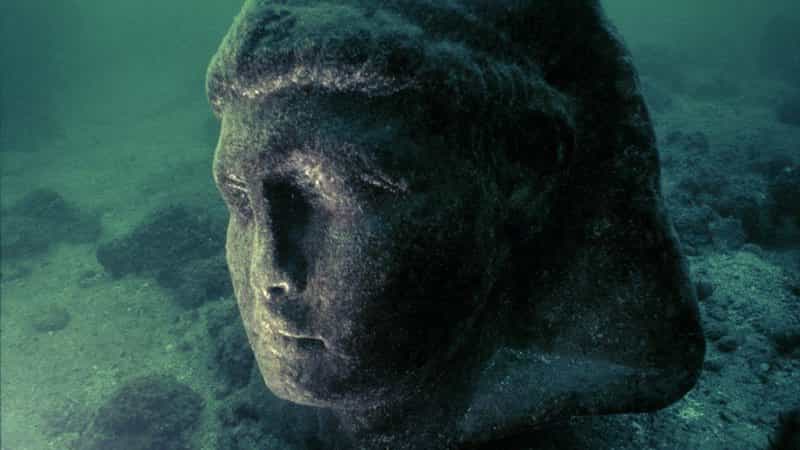Cleopatra has become one of the most iconic historical figures. Egypt’s last pharaoh, until August 30 BC, when she died, became famous for her power and conquests – both territorial and loving.
Due to her influence, it is not strange to imagine that many monuments were built in her government that represented her greatness.
In the city of Alexandria, the capital of Egypt at the time, her palace was located. Huge, as it should be, and composed of several buildings built on pillars and statues, for a long time, it was believed that it was lost.
Theories were that earthquakes and tidal waves would have destroyed the rich and decorated structures.
French archeologist Franck Goddio, however, found something that could cast doubt on this idea. When he discovered and translated texts written by the ancient Greek historian Strabo, he realized that perhaps this treasure was still around today.
The philosopher described the city of Alexandria and – to everyone’s surprise – an island off the capital’s coast. Named Antirhodos, it would be the real home of Pharaoh Cleopatra‘s huge palace.
It was then that the researcher decided that he would find the place lost and underwater. As they would say: Egyptian Atlantis.

The expedition
In 1996, a team of underwater archaeologists began looking for the palace. They found, however, that it was on the opposite side that Strabo had put it in his writings and even stranger: It was not that big.
It was modest, between 90 meters by 30 meters. The floor was composed of marble from the 3rd century BC and several ancient artifacts were found.
According to researcher Ashraf Abdel Raouf, involved in the expedition, “ceramics, bronze coins, small objects that are now in the laboratory and in restoration … remarkable objects” were discovered.
The treasure trove of approximately 20,000 objects, which are still being discovered, revealed more about Egypt’s thousands of years of history.
In addition, colossal statues also marked the experts’ sight when they found the palace. One of them was made of granite and represented a Ptolemaic ruler, probably Cleopatra’s father, Ptolemy XII Auletes.
More sphinxes were discovered underwater: one, gigantic, represented the Egyptian goddess Isis, of motherhood and fertility.
Another, made of stone, is just a head, which the researchers believe deals with Ptolemy XV Caesar, probable son of Cleopatra and Julius Caesar.
Raouf says the finding was impressive: “many exciting remains, such as columns, upper and lower case, granite blocks, many objects. The construction remains, we will leave it as part of the underwater museum bottom so that people can dive into this area and look for it”.
They managed to find the wooden structure of Pharaoh’s mansion. Using the carbon dating technique, the researchers concluded that it had been built at least 200 years before the queen was born. This may indicate that she did not build the palace, but inherited it.

But why was the palace submerged?
The researchers investigated the possibilities for a long time. The most accepted hypothesis today is that a few centuries after the end of the reign, an earthquake occurred and, as a consequence, a tsunami that hit the coast of the Egyptian capital. It would therefore have been a natural disaster that would have caused the royal palace to sink.

Read more Heracleion: The ancient Egyptian city that sank into the sea

Read more: Cleopatra, Queen of Egypt






